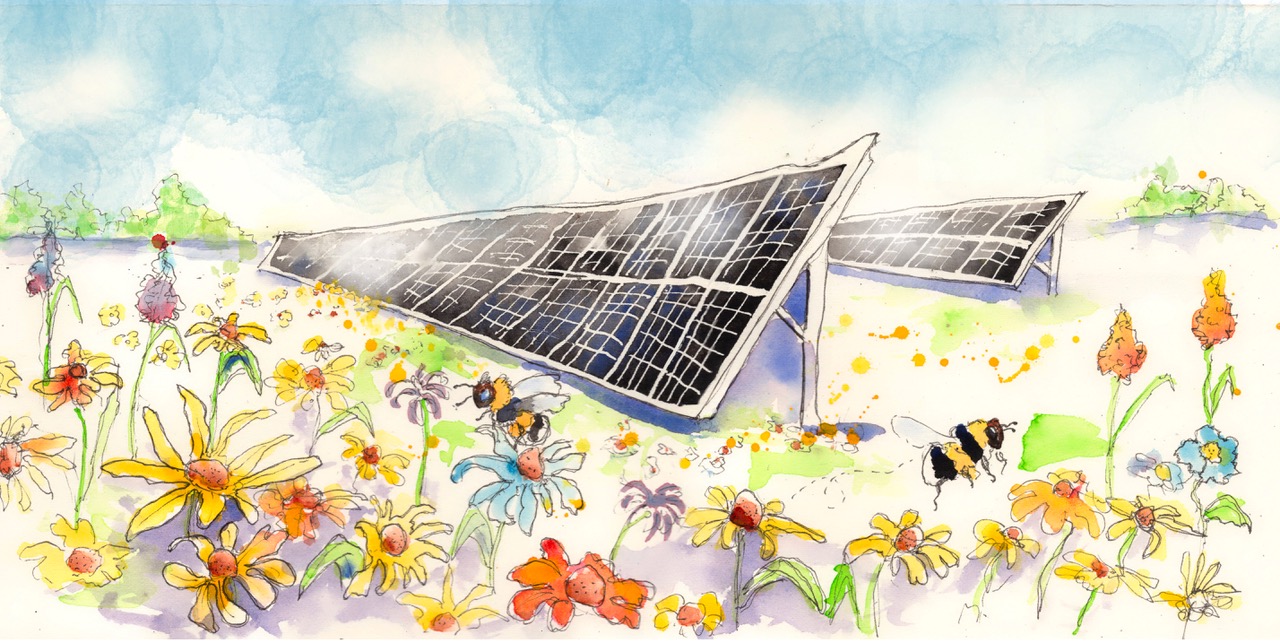Have any questions?
+44 1234 567 890

Biodiversity is at the heart of our planning
Our solar farms are designed to yield a significant increase in biodiversity against current levels on site.
Landscape Protection and Enhancement
Areas under and around the panels develop vegetation that is fit for grazing by sheep or can be cut for compost. At low intensity, livestock grazing can contribute to land conservation. Bare areas are seeded or planted quickly to prevent weeds from colonising.
A variety of mitigation measures are implemented to reduce any visual impact, to create biodiverse buffer zones and to minimise the impact of the arrays, including:
- planting of new woodland belts
- reinforcement of existing field boundary hedgerows and planting of new hedgerows
- reduction in the frequency and severity of hedge-cutting
- cultivation of grassland on the perimeter of the installation areas. Fine grasses are used as this encourages colonisation by wild herbs
- tree planting where appropriate
- planting of wildflower meadows which are proven to deliver higher biodiversity than pasture
All cables are buried and the land is professionally managed, ensuring continual biodiversity gain. Areas within array fields are left clear for skylark plots.
Ecology and Conservation
Our solar farm design incorporates a number of measures both to preserve and to enhance an area’s ecology. These include:
- protecting hedgerows, woodland and waterbodies/courses
- special measures to minimise impact on protected species
- all hedgerows, trees, ponds and woodland to have a minimum 5m buffer
- all ancient woodland to have a 15m buffer as per Natural England guidance
- all watercourses to have an 8m buffer as per Environment Agency guidance
- bee hives, log piles for insects, bird boxes and bat boxes to be sited around the project
Cessation of intensive agriculture results in the removal of large quantities of nitrates and pesticides from a project’s land, as well as the associated run-off into nearby rivers. Social enterprises are able to grow food on the land using regenerative agriculture methods, helping the land to recover. Wildflower pollen and nectar mixes have been shown to increase the number of bumblebees, while the buffer margins benefit grasshoppers and farmland birds. Intensive agriculture over the last 50 years has resulted in sharp bird and insect declines, while monoculture and field-size increase has sharply reduced habitat diversity. Our solar farms offer a singular opportunity to reverse and undo these declines, with potential positive effects on human health and wellbeing.